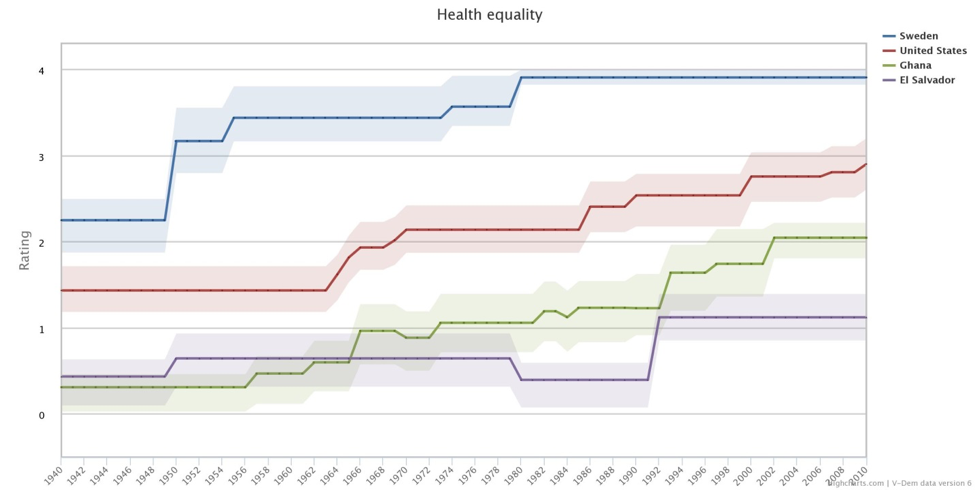World Health Day 7 April 2017
By: V-Dem Staff
Mar 31, 2017
It is an opportunity to draw attention to health issues around the world and offers a possibility to mobilize support for action. This week’s graph is looking at V-Dem’s Health Equality Variable in different countries around the globe.
By using the V-Dem Variable Graph Tool we compare four countries and their development over time. The variable measures to what extent high quality basic healthcare is guaranteed to all, sufficient to enable them to exercise their basic political rights as adult citizens. A high number on the scale represents a more equal distribution of healthcare and a low number implies a less equal distribution, thereby undermining peoples’ abilities to exercise their political rights.
In the graph we can see that all countries have experienced increased health equality since the 1940s. Sweden has the highest scores on the scale with equal healthcare to almost everyone. The United States took a steeper upward trend in health equality in the 1960. Ghana’s improvements started around the time of independence in the late 1950s, and still have only a somewhat equal healthcare system where 10 to 25 percent of citizens’ have more restricted access to healthcare. Lastly, El Salvador scores lowest among the four countries and has not seen any improvements since the beginning of the 1990s. Specifically, at least 25 percent of citizens have lower levels of access to healthcare.
To learn more about health care equality across the globe, use the V-Dem Online Analysis Tool on v-dem.net.


